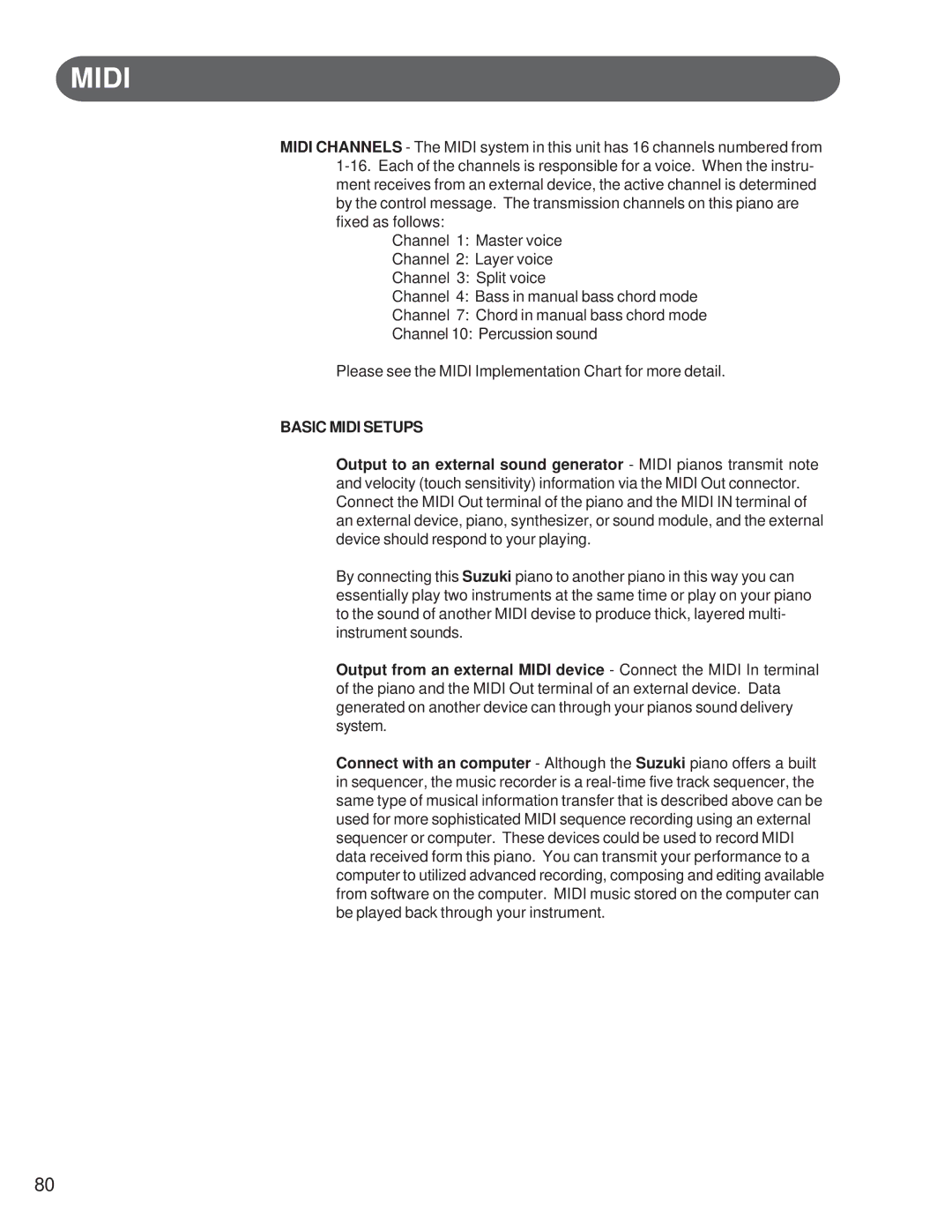MIDI
MIDI CHANNELS - The MIDI system in this unit has 16 channels numbered from
Channel 1: Master voice
Channel 2: Layer voice
Channel 3: Split voice
Channel 4: Bass in manual bass chord mode
Channel 7: Chord in manual bass chord mode
Channel 10: Percussion sound
Please see the MIDI Implementation Chart for more detail.
BASIC MIDI SETUPS
Output to an external sound generator - MIDI pianos transmit note and velocity (touch sensitivity) information via the MIDI Out connector. Connect the MIDI Out terminal of the piano and the MIDI IN terminal of an external device, piano, synthesizer, or sound module, and the external device should respond to your playing.
By connecting this Suzuki piano to another piano in this way you can essentially play two instruments at the same time or play on your piano to the sound of another MIDI devise to produce thick, layered multi- instrument sounds.
Output from an external MIDI device - Connect the MIDI In terminal of the piano and the MIDI Out terminal of an external device. Data generated on another device can through your pianos sound delivery system.
Connect with an computer - Although the Suzuki piano offers a built in sequencer, the music recorder is a
80
